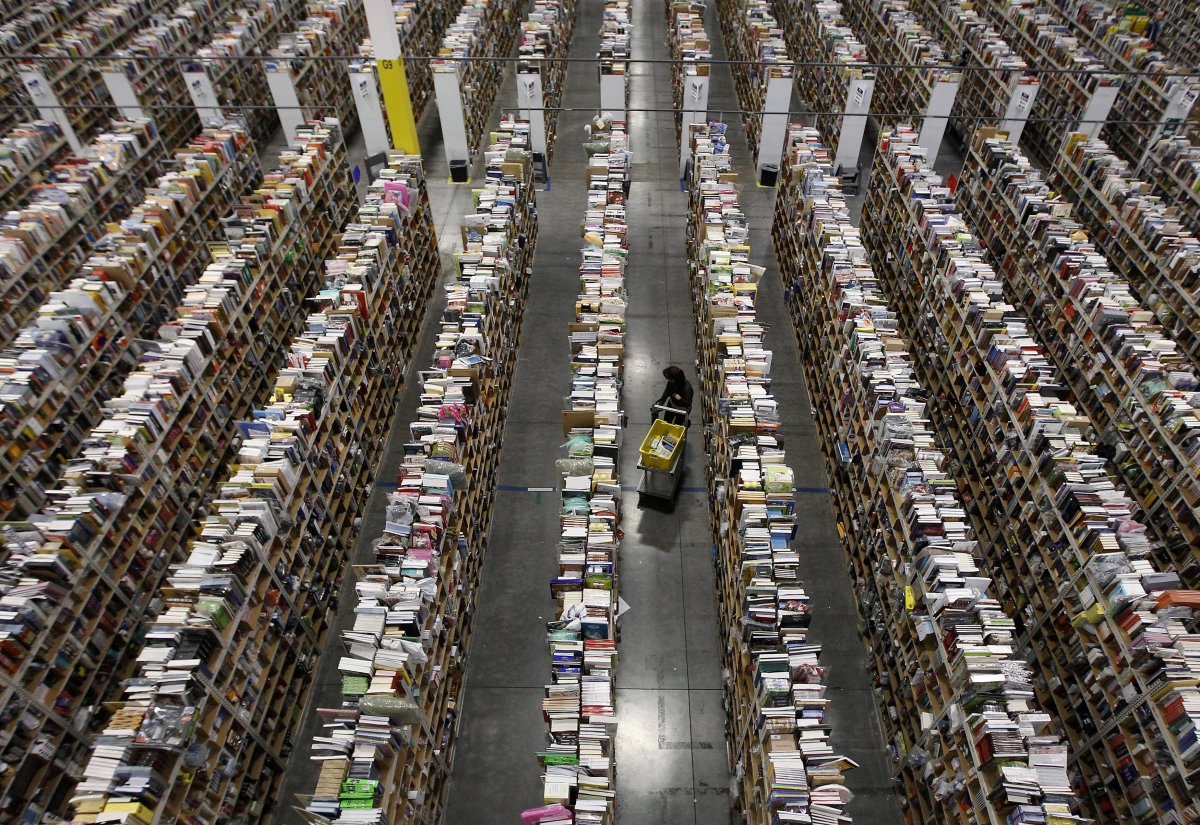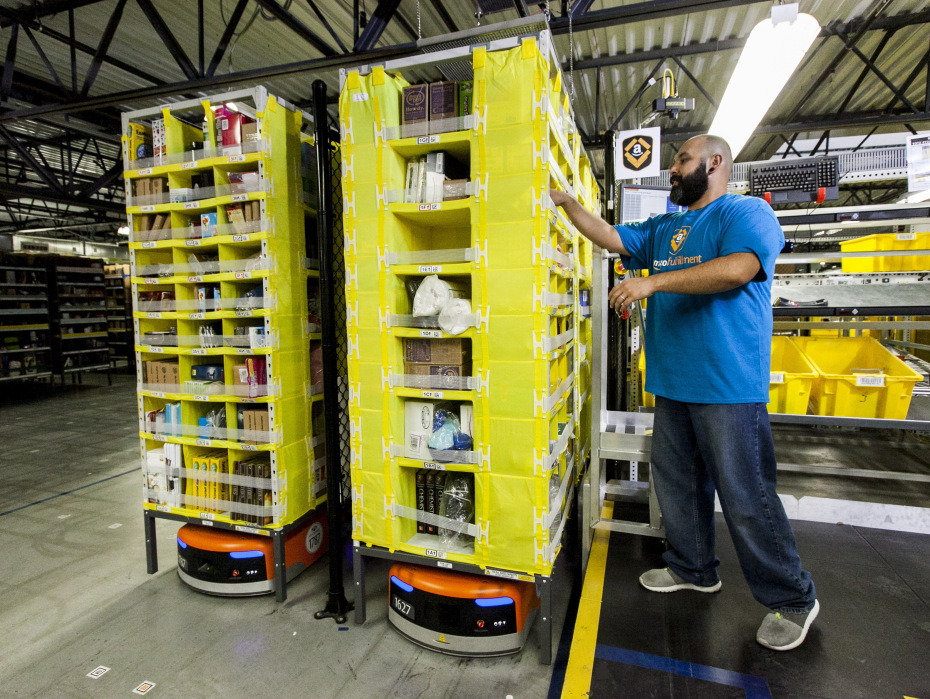Amazon robots do their job 4 times faster than humans.
Employees of companies need a salary, paid vacation, sick leave, a weekend, standardized work schedule, a lunch break. Robots of these shortcomings are deprived. Moreover, with the right application, robots in certain roles will cope with their duties faster than a human being and will not be bungled - no one will program them for this (only if for fun).
This is proved by the Amazon experience: storekeepers do their robots in 15 minutes, which takes 60-75 minutes for people to do. Due to this, the company has reduced operating costs at 13 warehouses by 20% - this is $ 22 million for each warehouse. When robots appear in all 110 warehouses of the company, the savings will be $ 800 million.

Kiva Systems was founded by Mick Mountz after the failure of his home delivery business. He explained the failure of a startup by the lack of flexibility of the process and the high cost of each particular order. As a result, he began working on a system that allows you to quickly get the goods, pack them and deliver them to the operator. With two companions, specialists in engineering and robotics, in 2003 he founded the company.
The work of Kiva can be estimated from this video, made back in 2008.
Amazon in 2012 saw the potential of Kiva for its warehouses and bought the company for 775 million dollars, and in 2014 began using robots. Orange robots move around the warehouse and move containers to help people quickly collect orders received from the online store. In pursuit of fast delivery of a large number of goods, Amazon has opened 110 warehouses at the moment. In thirteen of them, 30,000 Kiva robots are helping people - in just one year, Amazon doubled their number.
Warehouse staffers manually search for shelving, take out goods, pack and ship them. It took 60-75 minutes in the Amazon warehouse, writes Business Insiderwith reference to Deutsche Bank. Robots cope with the task of finding and delivering goods to the operator in 15 minutes.

This is what an Amazon warehouse without robots looks like.
Advantages - not just speed. In the warehouse equipped with robots, it is possible to accommodate up to 50% more goods per square meter. The distance between the racks is reduced, because robots need less space than humans. Robots do not require a salary and a full social package with insurance. You can save on heating - robots are not so demanding to the working conditions, like people.
Robots have reduced the operating costs of the warehouse by 20% - about 22 million dollars for each of the thirteen warehouses. When robots appear in all 110 warehouses of Amazon, according to estimates by Deutsche Bank, the company will save about another eight hundred million dollars one-time. The total savings will be about 2.5 billion without taking into account the equipment of the warehouse, which costs 15-20 million.

Amazon has two more areas where you can use robotic technology. Kiva can carry shelving, but can not independently get the goods from them - no hands. The company tried to solve this problem with the help of the Picking Challenge competition.in July 2015. The second direction suggests Deutsche Bank - it calls on Amazon to engage in autonomous trucks, because of the 4.5 thousand dollars that are needed to deliver a full truck of goods from the west to the east coast of the United States, 80% go to living workers.
This is proved by the Amazon experience: storekeepers do their robots in 15 minutes, which takes 60-75 minutes for people to do. Due to this, the company has reduced operating costs at 13 warehouses by 20% - this is $ 22 million for each warehouse. When robots appear in all 110 warehouses of the company, the savings will be $ 800 million.

Kiva Systems was founded by Mick Mountz after the failure of his home delivery business. He explained the failure of a startup by the lack of flexibility of the process and the high cost of each particular order. As a result, he began working on a system that allows you to quickly get the goods, pack them and deliver them to the operator. With two companions, specialists in engineering and robotics, in 2003 he founded the company.
The work of Kiva can be estimated from this video, made back in 2008.
Amazon in 2012 saw the potential of Kiva for its warehouses and bought the company for 775 million dollars, and in 2014 began using robots. Orange robots move around the warehouse and move containers to help people quickly collect orders received from the online store. In pursuit of fast delivery of a large number of goods, Amazon has opened 110 warehouses at the moment. In thirteen of them, 30,000 Kiva robots are helping people - in just one year, Amazon doubled their number.
Warehouse staffers manually search for shelving, take out goods, pack and ship them. It took 60-75 minutes in the Amazon warehouse, writes Business Insiderwith reference to Deutsche Bank. Robots cope with the task of finding and delivering goods to the operator in 15 minutes.

This is what an Amazon warehouse without robots looks like.
Advantages - not just speed. In the warehouse equipped with robots, it is possible to accommodate up to 50% more goods per square meter. The distance between the racks is reduced, because robots need less space than humans. Robots do not require a salary and a full social package with insurance. You can save on heating - robots are not so demanding to the working conditions, like people.
Robots have reduced the operating costs of the warehouse by 20% - about 22 million dollars for each of the thirteen warehouses. When robots appear in all 110 warehouses of Amazon, according to estimates by Deutsche Bank, the company will save about another eight hundred million dollars one-time. The total savings will be about 2.5 billion without taking into account the equipment of the warehouse, which costs 15-20 million.

Amazon has two more areas where you can use robotic technology. Kiva can carry shelving, but can not independently get the goods from them - no hands. The company tried to solve this problem with the help of the Picking Challenge competition.in July 2015. The second direction suggests Deutsche Bank - it calls on Amazon to engage in autonomous trucks, because of the 4.5 thousand dollars that are needed to deliver a full truck of goods from the west to the east coast of the United States, 80% go to living workers.
